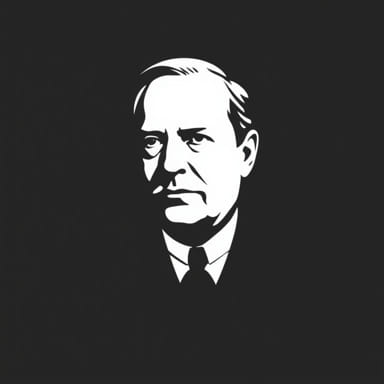William McKinley, the 25th President of the United States, served from 1897 until his assassination in 1901. During his presidency, two different individuals held the office of Vice President, each playing a distinct role in shaping the political environment of the time. The position of McKinley’s vice president is historically significant not only for the duties associated with the office but also for the path it set toward a major shift in American leadership. The identities and contributions of Garret A. Hobart and Theodore Roosevelt, McKinley’s vice presidents, offer insight into political dynamics, party strategy, and the unexpected consequences of presidential succession.
Garret A. Hobart: McKinley’s First Vice President
Garret Augustus Hobart served as Vice President during McKinley’s first term from 1897 until his untimely death in 1899. Hobart, a New Jersey lawyer and businessman, had gained prominence in Republican politics through his work in state government and national party fundraising.
Role and Influence in the Administration
Hobart was not a ceremonial figure; rather, he became an influential adviser and a close friend to President McKinley. He earned the nickname Assistant President for his active participation in policy discussions and his deep involvement in both domestic and international matters, including tariffs, currency reform, and the Spanish-American War.
Political Partnership with McKinley
The relationship between McKinley and Hobart was one of genuine collaboration. Unlike many vice presidents of the era, Hobart regularly attended cabinet meetings and provided political and legislative advice. His legal and business acumen helped McKinley navigate complex economic challenges, particularly during the debates over the gold standard.
Hobart’s Death and Legacy
Garret Hobart died in office on November 21, 1899, from heart disease. His death left the vice presidency vacant for the remainder of McKinley’s first term, as the Constitution did not then provide a mechanism to fill a vice presidential vacancy. Hobart’s passing also opened the door for a new political figure to rise to national prominence in the next election cycle.
Theodore Roosevelt: Vice President in McKinley’s Second Term
The selection of a vice president for McKinley’s second term became a pivotal decision for the future of the nation. Theodore Roosevelt, a dynamic and reform-minded figure, was chosen as McKinley’s running mate in the 1900 election. His popularity as a war hero from the Spanish-American War and his reputation as a progressive reformer made him an appealing choice to balance the Republican ticket.
Roosevelt’s Reluctant Nomination
While Roosevelt was ambitious, he initially hesitated to accept the nomination. He had recently become governor of New York and was focused on reforming the state’s political system. However, party leaders, particularly Republican boss Thomas Platt, encouraged Roosevelt to take the vice presidency to remove him from New York politics and curb his reformist zeal.
Election of 1900 and National Mood
McKinley and Roosevelt won the 1900 election with a strong majority, buoyed by the country’s economic prosperity and the success of the Spanish-American War. The pairing of McKinley’s steady leadership with Roosevelt’s energetic persona appealed to both traditional conservatives and younger reform-minded voters.
Roosevelt’s Role as Vice President
During his brief tenure as vice president, Roosevelt had limited influence. The office remained largely ceremonial, and McKinley did not involve him in major policy decisions. Roosevelt used his time to travel, speak on national unity, and promote his vision of American greatness. His speeches and charisma continued to attract public attention, positioning him as a leader in waiting.
The Assassination of President McKinley
On September 6, 1901, President McKinley was shot by anarchist Leon Czolgosz while attending the Pan-American Exposition in Buffalo, New York. Initially, it seemed that McKinley would recover, but complications from gangrene set in, and he died on September 14, 1901.
Roosevelt’s Sudden Rise to Power
Upon McKinley’s death, Theodore Roosevelt was sworn in as President of the United States, becoming, at age 42, the youngest person ever to hold the office. His ascent to the presidency marked a turning point in American politics, as Roosevelt brought a new energy and progressive agenda to the White House.
Impact on the Vice Presidency
Roosevelt’s succession demonstrated the importance of the vice presidency, which had often been seen as a political afterthought. His rise reinforced the need to consider the readiness and capability of those chosen to be next in line for the highest office in the land.
Political and Historical Significance
The two vice presidents who served under McKinley played very different but equally important roles in shaping American history. Hobart strengthened the office through cooperation and influence within the administration. Roosevelt, though limited during his time as vice president, would leave an indelible mark as McKinley’s successor.
The Vice Presidency as a Stepping Stone
- The position of vice president became more visible and politically strategic during McKinley’s administration.
- Roosevelt’s presidency redefined the role of the executive branch and left a lasting legacy on the office of vice president.
- The sudden transition of power emphasized the need for careful selection of running mates based on leadership ability and vision.
Lessons from McKinley’s Vice Presidents
The contrasting careers of Hobart and Roosevelt highlight the evolving nature of the vice presidency. Hobart represented the ideal of a collaborative adviser, while Roosevelt exemplified the potential for transformative leadership. Their tenures reflect both the challenges and the opportunities of serving as vice president in a rapidly changing America.
The Vice Presidency Under McKinley
President William McKinley’s time in office was marked by economic recovery, imperial expansion, and ultimately, tragedy. His two vice presidents, Garret A. Hobart and Theodore Roosevelt, played crucial roles in shaping the trajectory of the nation. Hobart provided stability and counsel during McKinley’s first term, while Roosevelt’s bold personality and eventual presidency ushered in a new era of progressive reform. The legacy of McKinley’s vice presidents serves as a reminder of how vital the office can become, especially during times of national transition and uncertainty.
